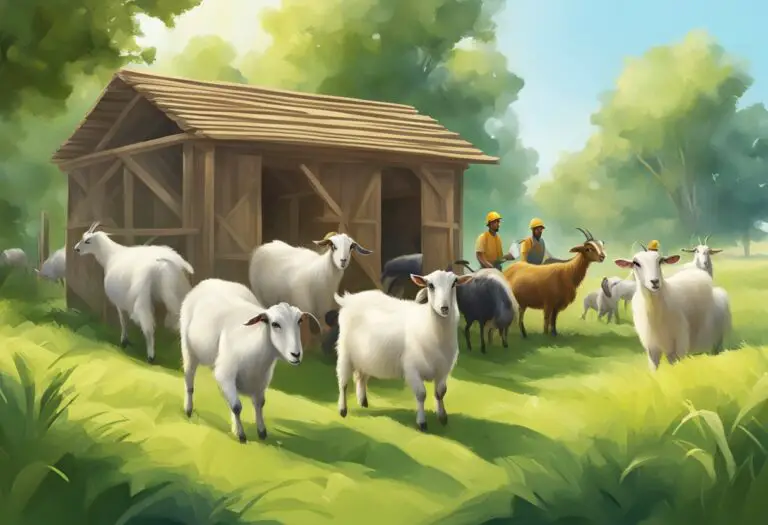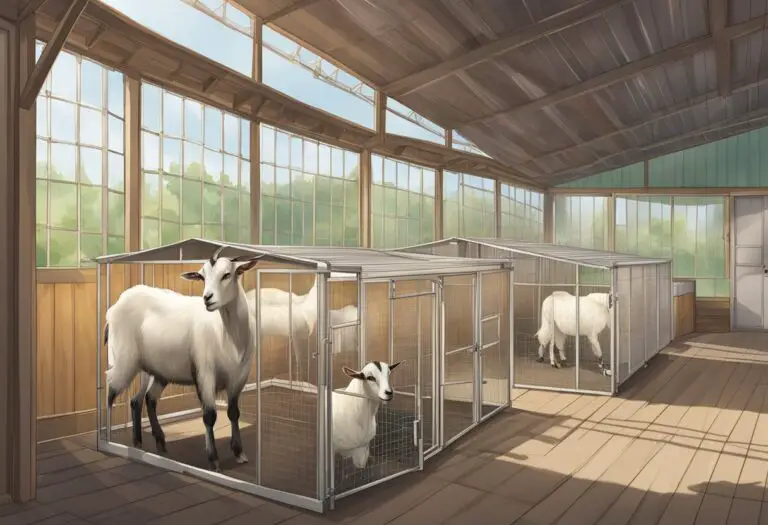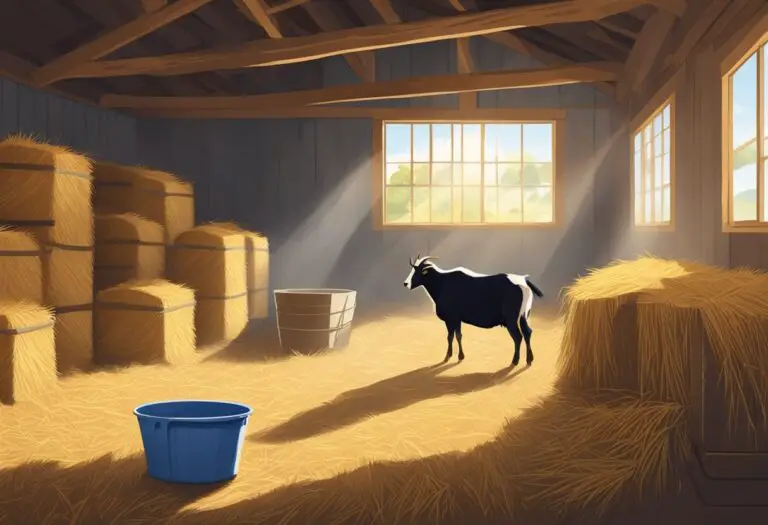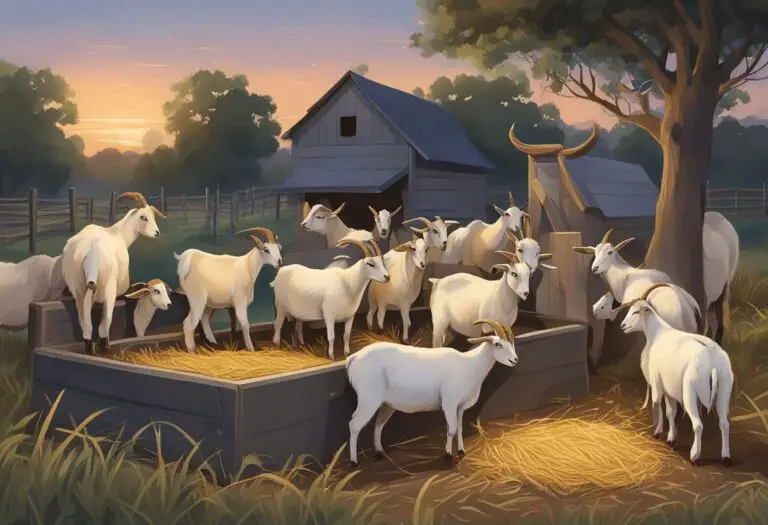When Do Goats Need Shelter from the Elements: A Guide for Owners
Goats are hardy animals that can withstand a variety of weather conditions, but they still require shelter from the elements at certain times. Knowing when goats need shelter is essential for their overall health and well-being. In this article, we will discuss the different weather conditions that necessitate shelter for goats and provide tips on how to provide adequate shelter for them.
Extreme temperatures, such as extreme heat or cold, can be dangerous for goats, and they need shelter to protect themselves from these conditions. During the summer, goats need shade to protect themselves from the sun’s heat, while in the winter, they require a dry, draft-free shelter to keep them warm and dry. In addition to temperature extremes, goats also require shelter during heavy rain, snow, or other severe weather conditions.
Providing adequate shelter for goats is essential to ensure their health and well-being. A good shelter should be dry, draft-free, and well-ventilated. It should also be large enough to accommodate all of the goats in the herd and provide enough space for them to move around comfortably. By understanding when goats need shelter and providing them with adequate shelter, goat owners can ensure that their animals remain healthy and happy.
Understanding Goats’ Shelter Needs

Goats are hardy animals that can withstand a variety of weather conditions, but they still require shelter from the elements in certain situations. Understanding goats’ shelter needs is crucial for ensuring their health and well-being.
Impact of Weather on Goats
Goats are affected by extreme weather conditions such as heavy rain, snow, and wind. During these conditions, goats require shelter to protect them from hypothermia and other health issues. A basic shelter can be a simple three-sided structure that provides protection from wind and rain.
In addition, goats can also suffer from heat stress during hot weather. It is essential to provide shade and ventilation to keep them cool and comfortable. A well-ventilated shelter with a shade cloth or tarp can be an effective solution for hot weather.
Goats’ Tolerance to Temperature Extremes
Goats can tolerate a wide range of temperatures, but they have their limits. They are most comfortable in temperatures between 40 and 70 degrees Fahrenheit. In temperatures below 20 degrees Fahrenheit, goats require shelter to prevent hypothermia.
In contrast, goats can become uncomfortable in temperatures above 80 degrees Fahrenheit. They start panting and sweating to regulate their body temperature, which can lead to dehydration and heat stress. Providing shade and ventilation is crucial to keep them comfortable during hot weather.
Overall, understanding goats’ shelter needs is essential for ensuring their health and well-being. Providing a basic shelter with proper ventilation and shade can help goats withstand extreme weather conditions and keep them comfortable in all seasons.
Basic Shelter Requirements for Goats

Goats are hardy animals and can tolerate a wide range of temperatures, but they still need shelter from the elements. A good shelter will protect goats from harsh weather conditions such as rain, wind, and extreme temperatures. Here are some basic shelter requirements for goats:
Shelter Size and Space
The size of the shelter will depend on the number of goats you have. As a general rule, each goat needs at least 15 to 20 square feet of indoor space. The shelter should be tall enough to allow goats to stand up on their hind legs and stretch out their necks. It should also be wide enough for them to move around comfortably.
Ventilation and Insulation
A well-ventilated shelter is important to prevent the buildup of moisture and ammonia from urine and feces. The shelter should have windows or vents that can be opened and closed as needed. Insulation is also important to keep goats warm during the winter months. Straw or hay bales can be used for insulation.
Bedding and Flooring
The flooring of the shelter should be dry and clean. Concrete or dirt floors are common, but they can be hard on goats’ joints. Bedding can be used to provide cushioning and absorb moisture. Straw, hay, or wood shavings are good options.
In summary, providing a good shelter for goats is important for their health and well-being. The shelter should be the right size, well-ventilated, insulated, and have clean bedding and flooring. By meeting these basic requirements, goats will be able to thrive in a safe and comfortable environment.
Shelter Types and Materials

Goats need shelter from the elements to stay healthy and comfortable. Providing shelter can also help prevent diseases and reduce stress. There are different types of shelters that can be used to protect goats from the weather, including natural shelters, man-made structures, and portable shelters.
Natural Shelters
Natural shelters are the easiest and most cost-effective way to provide shelter for goats. These shelters are made from natural materials such as trees, rocks, and bushes. They can provide shade in the summer and protection from the wind and rain in the winter.
Man-Made Structures
Man-made structures are another option for providing shelter for goats. These structures can be made from different materials such as wood, metal, or concrete. They can be permanent or temporary and can be customized to fit the specific needs of the goats.
Portable Shelters
Portable shelters are a good option for farmers who need to move their goats around frequently. These shelters can be made from lightweight materials such as PVC pipes or canvas. They are easy to set up and take down and can be moved from one location to another with ease.
When choosing a shelter for goats, it’s important to consider the climate, the number of goats, and the available space. The shelter should be well-ventilated, dry, and free from drafts. It should also be clean and easy to maintain. By providing adequate shelter, farmers can help ensure the health and well-being of their goats.
Seasonal Shelter Considerations

Goats need shelter from the elements to stay healthy and comfortable. Depending on the season, different considerations should be taken into account to provide adequate shelter.
Winter Shelter Needs
During the winter months, goats need shelter to protect them from harsh winds, snow, and freezing temperatures. A well-insulated and draft-free shelter is necessary to keep goats warm and dry. The shelter should be large enough to allow goats to move around freely and should have good ventilation to prevent moisture buildup.
Bedding material such as straw, hay, or wood shavings should be provided to keep goats warm and comfortable. It is important to keep the bedding clean and dry to prevent the growth of harmful bacteria and fungi.
In addition to shelter, goats need access to fresh water and a balanced diet to maintain their body temperature and energy levels during the winter months.
Summer Shelter Adaptations
During the summer months, goats need shelter to protect them from the heat and direct sunlight. A shaded area with good ventilation is necessary to keep goats cool and comfortable. A shelter with a roof and open sides can provide adequate shade and allow for good air circulation.
It is important to provide plenty of fresh water to prevent dehydration during hot weather. Goats should also have access to a balanced diet that provides the necessary nutrients to maintain their health and energy levels.
In addition to shelter, it is important to provide a clean and dry area for goats to rest and relax during the summer months. Bedding material such as straw or wood shavings can help absorb moisture and keep goats comfortable.
By providing appropriate shelter, bedding, and nutrition, goats can thrive in a variety of weather conditions.
Shelter Maintenance and Hygiene

Regular Cleaning Routines
Keeping goat shelters clean is essential for maintaining the health and well-being of the animals. Regular cleaning routines should be established to ensure that the shelter is free from dirt, debris, and other contaminants. This can be done by sweeping the floors, removing any soiled bedding, and disinfecting the surfaces with a suitable disinfectant.
It is important to keep the shelter dry and well-ventilated to prevent the growth of bacteria and mold. Wet bedding should be removed and replaced with fresh, dry bedding to prevent the buildup of ammonia and other harmful gases that can cause respiratory problems in goats.
Pest Control
Goat shelters should be regularly inspected for signs of pests such as rodents, insects, and other unwanted animals. These pests can cause damage to the shelter and pose a threat to the health of the goats.
To prevent pest infestations, it is important to keep the shelter clean and free from food sources that may attract pests. Any cracks or gaps in the walls or floors should be sealed to prevent pests from entering the shelter.
In addition, it is important to use safe and effective pest control methods to eliminate any existing pest problems. This can include the use of traps, baits, or natural repellents.
By following these simple maintenance and hygiene practices, goat owners can ensure that their animals have a clean and healthy living environment.
Special Considerations

Shelter for Nursing Does and Kids
When it comes to nursing does and their kids, shelter is crucial. Newborn kids are particularly vulnerable to the elements, and it’s important to provide them with a warm, dry place to rest. A shelter that is enclosed on three sides and has a sloping roof to provide protection from the rain is ideal. Additionally, the shelter should be placed in an area that is well-drained to prevent the buildup of moisture.
For nursing does, it’s important to provide them with a separate area where they can rest and nurse their kids in peace. This not only helps to ensure that the kids get enough milk, but it also helps to prevent other goats from disturbing them. A separate area also allows for easier monitoring of the kids’ health and growth.
Accommodating Goats with Special Needs
Some goats may have special needs that require additional shelter accommodations. For example, goats with mobility issues may require a shelter with a ramp or a level surface to make it easier for them to enter and exit. Additionally, goats with health issues may require a separate, isolated area to prevent the spread of disease to other goats.
It’s important to consider the individual needs of each goat and provide them with the appropriate shelter accommodations. This not only helps to ensure their health and well-being, but it also helps to prevent the spread of disease and minimize stress.
Overall, providing appropriate shelter for goats is essential to their health and well-being. By considering the special needs of nursing does, kids, and goats with special needs, goat owners can ensure that their animals are comfortable and protected from the elements.







